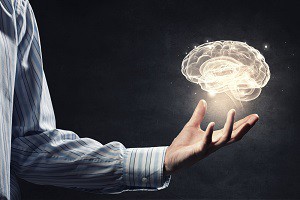Written by Greg Arnold, DC, CSCS. After 3 months of 3-ball juggling, 25 elderly participants had a significant “transient matter increase” in three areas of the brain compared to the 25 controls.
 As we age, nearly every system in our body undergoes a type of degeneration, from the arthritis in our joints to plaque buildup in our arteries. Chronic disease costs our healthcare system billions of dollars each year, including $256 million for congestive heart failure, $1.6 billion for arthritis, $410 million for asthma, and $1.8 billion for diabetes 1.
As we age, nearly every system in our body undergoes a type of degeneration, from the arthritis in our joints to plaque buildup in our arteries. Chronic disease costs our healthcare system billions of dollars each year, including $256 million for congestive heart failure, $1.6 billion for arthritis, $410 million for asthma, and $1.8 billion for diabetes 1.
When it comes to brain health, degeneration is evidenced by decreased sensation, thought process (cognition), memory, and motor control 2. Other areas of decline include reaction time, speed of movement, and coordination of hands and feet 3. When discussing the concept of “use it or lose it” regarding brain function, research has shown that young brains, even as young as 20 years old, can change for the better with neurological exercise 4.
A 2008 study 5 has also suggested that even brains in elderly people can experience similar beneficial changes. In the study, 44 subjects (20 men, 24 women) between the ages of 50 and 67 with no health conditions, signs of dementia, and no ability to juggle had 3 brain MRIs done over a 6-month period. After an initial MRI, they followed a 3-month training program done in previous research 6, after which a second brain MRI was performed. All subjects were then instructed to stop practicing for 3 months and then had their final MRI. The researchers had a separate control group of 25 subjects (8 men, 17 women) between the ages of 55 and 67 who had the MRIs done but without any of the training protocol.
After 3 months, 25 of the 44 subjects in the juggling group were able to juggle for 60 seconds and had their scans compared to the 25 control groups. The researchers found a statistical significance in “the transient increase in gray matter” in 3 areas of the brain: where vision is processed (“temporal area of the visual cortex) (p < 0.001), right side of the hippocampus (p < 0.001) and the nucleus accumbens bilaterally (p < 0.001).
When suggesting how the brains of these elderly subjects were able to improve their brain structure with 3 months of training, the researchers suggested that the hippocampus in humans is able to form neurons throughout life 7 and that “physical activity and an enriched environment have been shown to improve the rate of adult nerve formation and maintenance of these new neurons 8.
For the researchers, “A brain-plasticity-based training program would potentially promise an improvement of the operational capabilities of aging adults 9” and that “As people age, they should not do less, but do more to keep and maintain their abilities.”
Source: Janina Boyke, Joenna Driemeyer, Christian Gaser, Christian Büchel, and Arne May. “Training-induced brain structure changes in the elderly.” Journal of Neuroscience 28, no. 28 (2008): 7031-7035.
© 2008 Society of Neuroscience.
Posted April 24, 2017.
Greg Arnold is a Chiropractic Physician practicing in Hauppauge, NY. You can contact Dr. Arnold directly by emailing him at PitchingDoc@msn.com or visiting his web site at www.PitchingDoc.com.
References:
- CDC. Preventing Chronic Disease. 2015; Costs of Chronic Diseases at the State Level: The Chronic Disease Cost Calculator. Available at: https://www.cdc.gov/pcd/issues/2015/15_0131.htm. Accessed April 19, 2017, 2017.
- Mahncke HW, Bronstone A, Merzenich MM. Brain plasticity and functional losses in the aged: scientific bases for a novel intervention. Progress in brain research. 2006;157:81-109.
- Guan J, Wade MG. The effect of aging on adaptive eye-hand coordination. The Journals of Gerontology Series B: Psychological Sciences and Social Sciences. 2000;55(3):P151-P162.
- May A, Gaser C. Magnetic resonance-based morphometry: a window into structural plasticity of the brain. Current opinion in neurology. 2006;19(4):407-411.
- Boyke J, Driemeyer J, Gaser C, Büchel C, May A. Training-induced brain structure changes in the elderly. The Journal of neuroscience. 2008;28(28):7031-7035.
- Draganski B, Gaser C, Busch V, Schuierer G, Bogdahn U, May A. Neuroplasticity: changes in grey matter induced by training. Nature. 2004;427(6972):311-312.
- Eriksson PS, Perfilieva E, Björk-Eriksson T, et al. Neurogenesis in the adult human hippocampus. Nature medicine. 1998;4(11):1313-1317.
- Gage FH. Neurogenesis in the adult brain. Journal of Neuroscience. 2002;22(3):612-613.
- Mora F, Segovia G, del Arco A. Aging, plasticity and environmental enrichment: structural changes and neurotransmitter dynamics in several areas of the brain. Brain research reviews. 2007;55(1):78-88.
